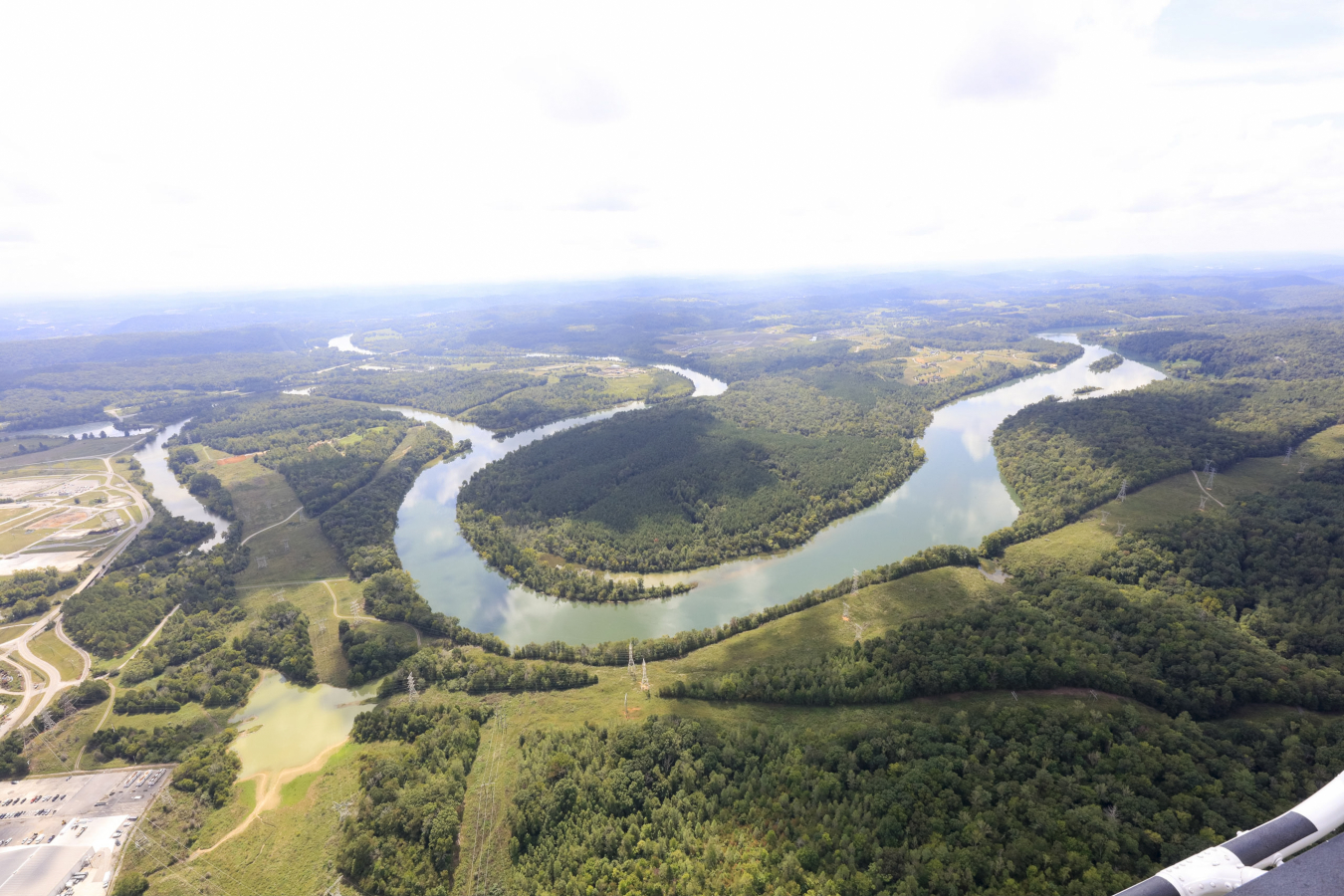DOE recently honored three EM sites for exemplary achievements in innovation, strategic partnerships, and planning and completion of projects that advance sustainability at Department sites and national laboratories.
Office of Environmental Management
August 3, 2021DOE recently honored three EM sites for exemplary achievements in innovation, strategic partnerships, and planning and completion of projects that advance sustainability at Department sites and national laboratories.
The Savannah River Site (SRS), Moab Uranium Mill Tailings Remedial Action Project, and Oak Ridge all received honorable mentions in DOE’s Sustainability Awards program this year. The awards celebrate excellence in energy, water, waste, fleet, sustainable acquisition, and resilience, as well as achievements in projects representing exemplary sustainability practices.
EM has made substantial progress in efforts to comply with requirements aiming to make the federal government more sustainable and resilient to climate change, including large reductions in energy and water use and increased renewable energy use. The cleanup program also leads the Department in greenhouse gas reductions.
Savannah River Site
DOE recognized the EM program at SRS for innovation in its large underground, water-permeable wall made of recycled iron filings that neutralize Cold War-era chemical solvents found in the aquifer beneath the site. The wall is as long as three basketball courts and, on average, about 4 inches thick, extending 135 feet below the earth's surface at its deepest point.
“We are committed to reducing risk and protecting groundwater aquifers and surface waters from potential sources of contamination,” DOE Savannah River Operations Office Manager Mike Budney said. “This in-ground permeable reactive barrier wall in P-Area is a great example of how we address sources of contamination and employ innovative technologies to remedy it.”
The wall is cost effective compared to traditional treatment methods and successful in destroying more than 90% of the chlorinated volatile organic compounds from the solvents, according to SRS.
Construction of the wall was completed early last year. It’s expected to function for more than 30 years with little or no carbon footprint. Energy and project cost savings are approximately $1.183 million per year, with anticipated project savings over the next 30 years of over $35 million.
Moab Uranium Mill Tailings Remedial Action Project
The Moab Project received honorable mention for its partnership with the National Park Service (NPS) to salvage native plants from the Canyonlands National Park and replant them at the Moab Site.
“We’re honored to receive this honorable mention and excited about this collaboration with the National Park Service," Moab Project Revegetation Manager Katrina Lund said. "Salvaging native plants gets us one step closer to our goal of a self-sustaining native plant landscape and we look forward to future cooperative events such as this.”
Canyonlands had needed to make room for a construction project and didn’t want native plants such as needle-and-thread grass, Indian ricegrass, and four-wing saltbush to go to waste. The Moab Project cultivates native plants to revegetate areas of the site, so the two entities teamed up to replant some of the vegetation at the Moab Site.
The Moab Project noted that the partnership with NPS benefits the environment and revegetation efforts by restoring remediated land to a native landscape and promotes sustainability and resiliency. The transplanted plants require less water than the amount needed to germinate seeds, saving the Moab Project more than 33,000 gallons of non-potable water that would have been used to irrigate seedlings. By using less irrigation water, the Moab Project reduced electrical use and saved approximately $1,200.
The NPS pointed to additional ecological benefits of the partnership. Salvaged bunchgrasses such as Indian ricegrass have large, nutritious seeds — a critical food source for many wildlife species. The large-seeded grasses may be impacted by climate change, so giving them a helping hand is important, according to the NPS.

Oak Ridge
DOE honored Oak Ridge for an outstanding sustainability project after EM and cleanup contractor UCOR successfully achieved Vision 2020, becoming the first site in the world to remove an entire uranium enrichment complex by completing environmental cleanup at the East Tennessee Technology Park (ETTP).
“We’re honored that our efforts at ETTP are being recognized by the Department,” Oak Ridge Office of Environmental Management Manager Jay Mullis said. “Together with UCOR, we have achieved historic cleanup accomplishments, implemented environmentally conscious strategies, and transformed the site into a marketable community asset that is attracting new industry and economic development to the region.”
As a result of the Department’s largest-ever cleanup effort, Oak Ridge has transferred more than 1,200 acres of land and numerous buildings to the private sector for use in a multi-use industrial park. Three solar fields located there together produce an average of approximately 1.7 megawatts of electricity annually. Oak Ridge also placed 3,500 acres of land into conservancy for protection of wetlands, flora, and fauna.
Reuse and recycling have been central to the project. Over the last five years, more than 26.5 million pounds of demolition debris, 3 million pounds of scrap metal, 1.2 million pounds of paper and cardboard, 133,000 pounds of plastics, 95,000 pounds of electronics, and 235,000 pounds of universal waste were diverted from landfills.

